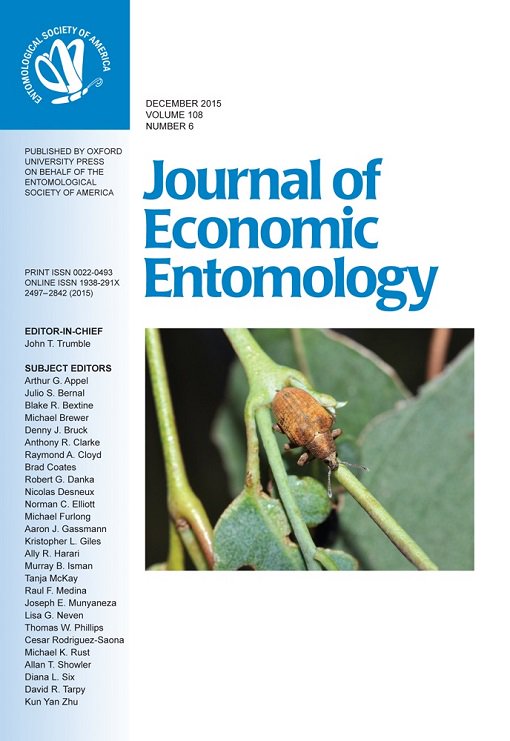Phosphine (PH3) and ethyl formate (EF) are two potentially powerful postharvest fumigant insecticides.We investigated the effectiveness of both PH3 and EF as fumigants at all developmental stages of the potato tuber moth Phthorimaea operculella Zeller, and we also studied the synergistic effects of these fumigants under controlled atmospheres of 50 and 80% oxygen (O2). The larval stage of P. operculella was the most susceptible to fumigation with PH3 at both 5°C and 20°C. All of the developmental stages showed greater susceptibility to PH3 at 20°C than at 5°C, whereas the susceptibility of adult P. operculella to this fumigant was not affected by temperature. The toxicity of EF did not differ with temperature for any of the P. operculella developmental stages. The atmospheric oxidation of PH3 increased the toxicity of this fumigant toward all developmental stages at both temperatures. In contrast, no differences in toxicity were observed for oxidized EF compared with EF alone at any developmental stage. In conclusion, using fumigation tests, we showed that atmospherically oxidized PH3 was much more effective against P. operculella than PH3 alone, demonstrating a synergistic effect for this fumigant and O2. Therefore, treatment with PH3 and high concentrations of O2, as described in this study, could be useful for managing the postharvest pest P. operculella.
How to translate text using browser tools
1 December 2015
Synergistic Effects of Oxygen on Phosphine and Ethyl Formate for the Control of Phthorimaea operculella (Lepidoptera: Gelechiidae)
Hyun Kyung Kim,
Seon-Woo Lee,
Ju-Il Kim,
Jeong-Oh Yang,
Hyun-Na Koo,
Gil-Hah Kim
ACCESS THE FULL ARTICLE
It is not available for individual sale.
This article is only available to subscribers.
It is not available for individual sale.
It is not available for individual sale.
controlled Atmosphere
ethyl formate
oxygen effect
phosphine
Phthorimaea operculella





